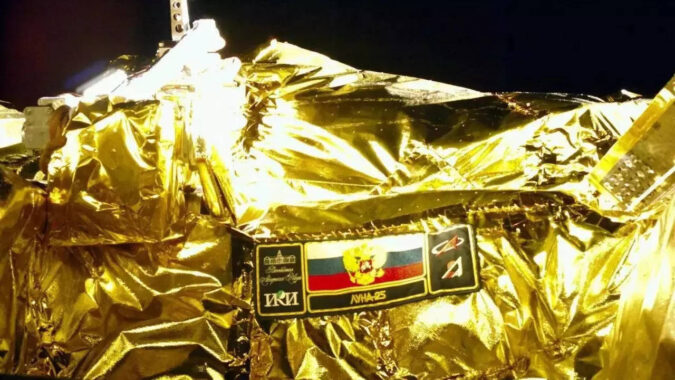Russia’s Luna-25 spacecraft adjusted its orbit on Friday as it prepared to attempt the first landing near the south pole of the moon, space agency Roscosmos said.
“Today at 09:20 Moscow time (0620 GMT), the propulsion system of the automatic station performed an orbit correction lasting 40 seconds. Its goal is to provide the best conditions for the subsequent construction of a pre-landing orbit,” Roscosmos said in a statement.
It said the adjustment went smoothly and the spacecraft’s onboard systems and communications were all functioning normally.
Russian space chief Yuri Borisov said last week that Luna-25 aimed to land on Aug. 21.
Chandrayaan-3, is also orbiting the moon in readiness for a landing near the south pole, where scientists believe there are significant quantities of frozen water that could support a human presence there in the future.
Much is riding on the success of Russia’s first lunar mission in 47 years, with Moscow attempting to prove that it is still a leader in space exploration despite the huge costs of the war in Ukraine and Western sanctions aimed at curbing its access to technology.
“Today at 09:20 Moscow time (0620 GMT), the propulsion system of the automatic station performed an orbit correction lasting 40 seconds. Its goal is to provide the best conditions for the subsequent construction of a pre-landing orbit,” Roscosmos said in a statement.
It said the adjustment went smoothly and the spacecraft’s onboard systems and communications were all functioning normally.
Russian space chief Yuri Borisov said last week that Luna-25 aimed to land on Aug. 21.
Chandrayaan-3, is also orbiting the moon in readiness for a landing near the south pole, where scientists believe there are significant quantities of frozen water that could support a human presence there in the future.
Much is riding on the success of Russia’s first lunar mission in 47 years, with Moscow attempting to prove that it is still a leader in space exploration despite the huge costs of the war in Ukraine and Western sanctions aimed at curbing its access to technology.
